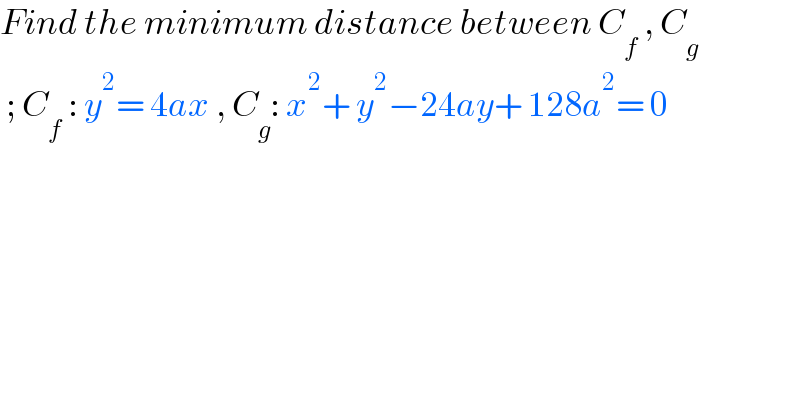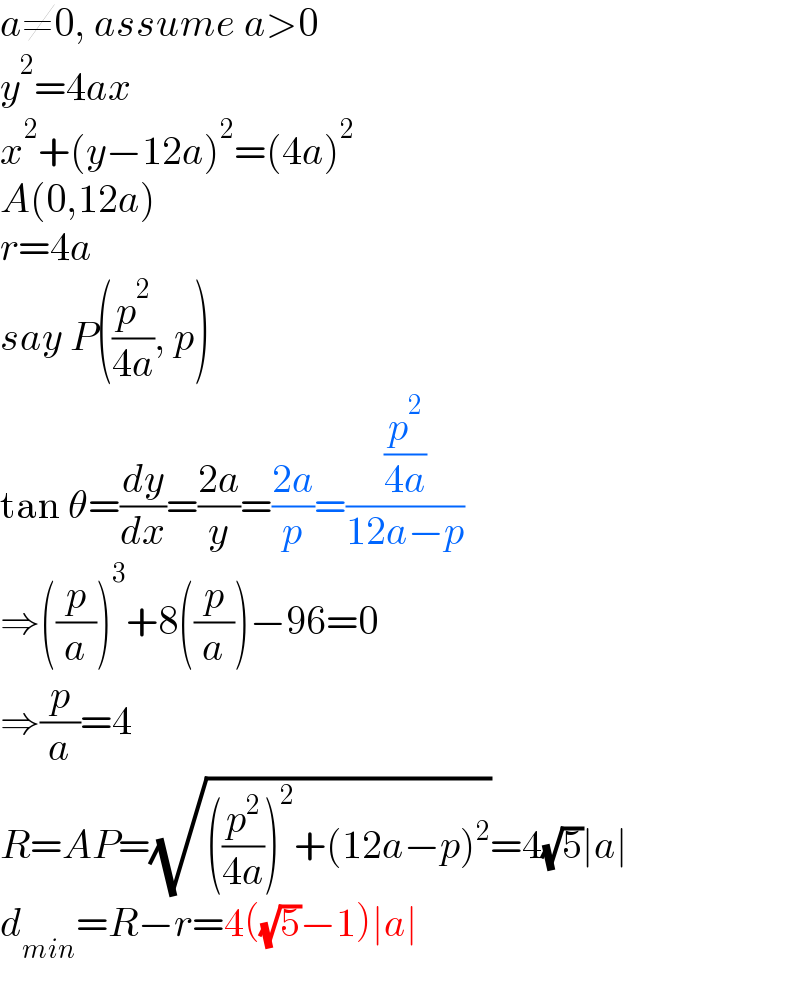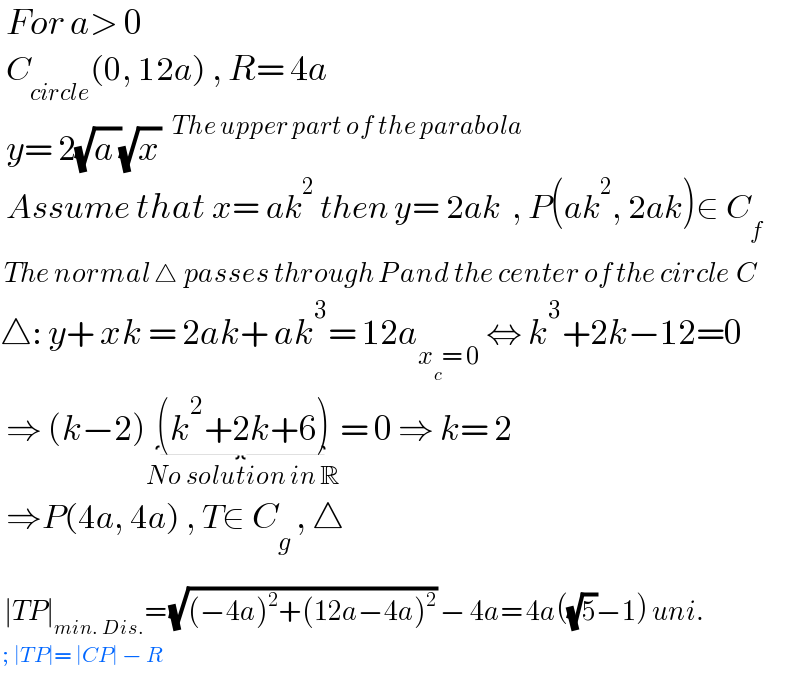
Question and Answers Forum
Question Number 183324 by Acem last updated on 25/Dec/22

Commented by Acem last updated on 25/Dec/22

Answered by mr W last updated on 25/Dec/22

Commented by mr W last updated on 25/Dec/22

Commented by mr W last updated on 25/Dec/22

Commented by Acem last updated on 25/Dec/22

Answered by Acem last updated on 25/Dec/22

